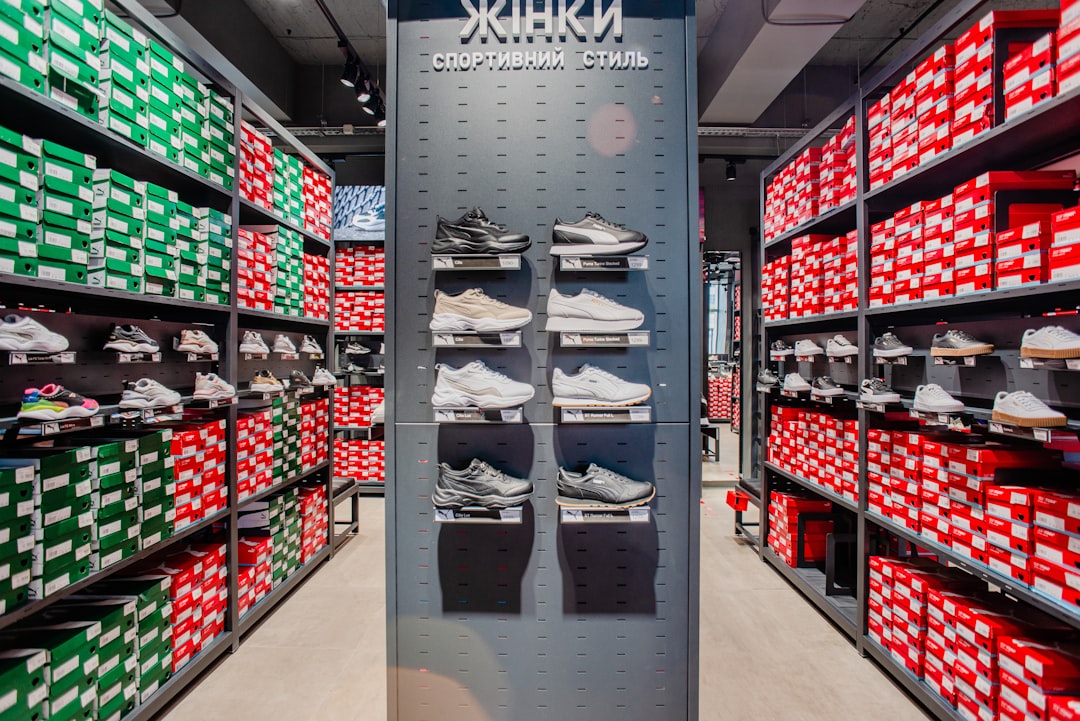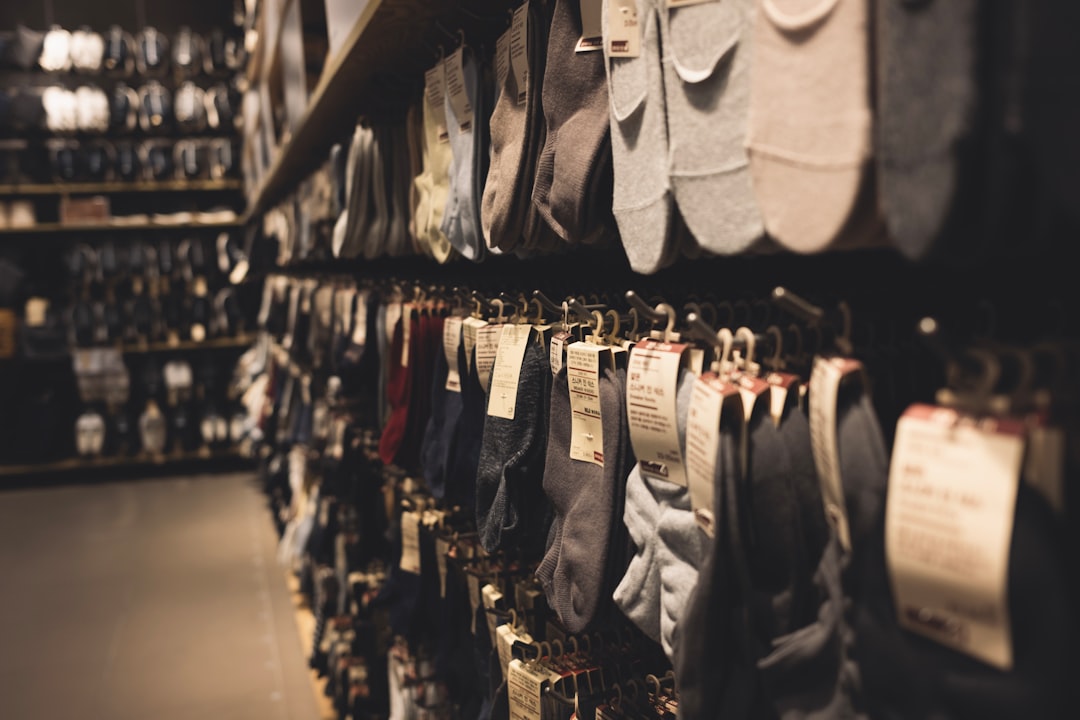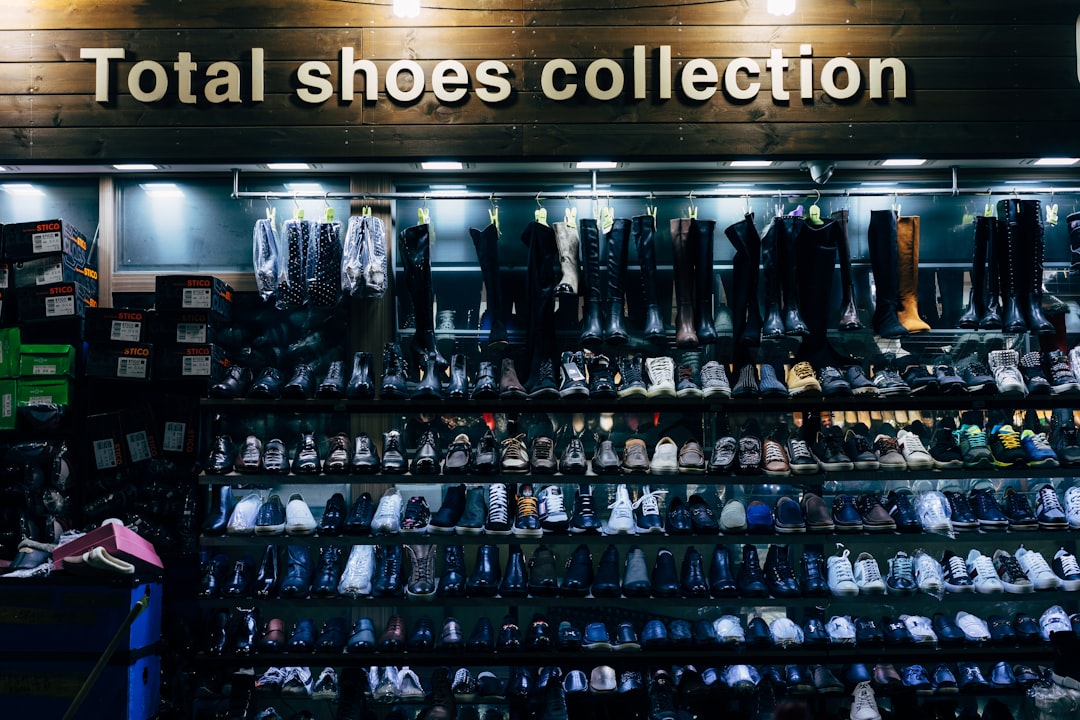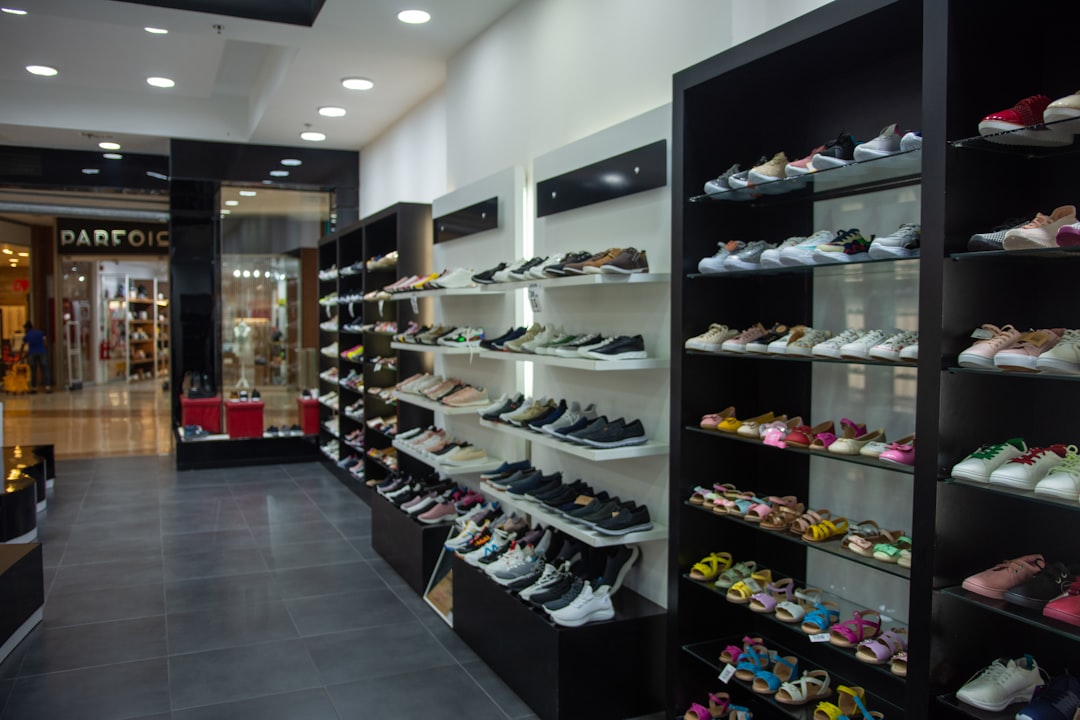

Engage prospects with a scan and streamline customer engagement with FREE QR code marketing tools by Sona – no strings attached!
Create a Free QR CodeFree consultation

No commitment

Engage prospects with a scan and streamline customer engagement with FREE QR code marketing tools by Sona – no strings attached!
Create a Free QR CodeFree consultation

No commitment
Retail shoe stores are navigating one of the most dynamic periods in their history. Beyond the ongoing impact of COVID-19 on store traffic and operations, shifting consumer preferences, the rising importance of mobile commerce, and the proliferation of e-commerce platforms are redefining how footwear brands and independent retailers connect with customers. Many stores still struggle to capture and measure every high-value opportunity, and disconnected touchpoints often mean missed prospects or inconsistent messaging. In a landscape where omnichannel strategies and sustainability are top of mind, the challenge is clear: bridge the offline and online experience seamlessly while driving measurable engagement and sales.
This is exactly where QR codes deliver real value, as shown in QR codes in marketing. For retail shoe stores, QR codes offer a low-friction pathway to digital content, loyalty programs, and data capture, whether at the shelf, the register, or in post-purchase communications. They not only foster connections with both in-store and mobile-first shoppers, but also help address the risk of missing out on valuable prospects who may browse but never formally engage, confronting a key pain point of untracked, high-intent visitors. QR codes enable real-time feedback and reviews and transform traditional analog touchpoints like signage and packaging into actionable digital journeys, making every customer interaction measurable and actionable.
By strategically deploying QR codes across your marketing mix, you can simplify the buyer journey, encourage customer interaction on every channel, and collect the first-party data that fuels smart segmentation and personalized marketing. For many retailers, this shift also helps reduce the issue of leads left unpursued or confusing messaging across campaigns. Used effectively, QR technology empowers shoe retailers to engage customers at every stage, from discovery to purchase, while delivering operational efficiencies and measurable ROI.

Retail shoe stores frequently face the frustration of relying on outdated approaches like paper sign-up sheets or static brochures, methods that leave high-value prospects untracked and engagement fragmented. QR codes bridge this gap between the physical retail experience and actionable digital touchpoints, helping stores bring order and insight to the chaos of traditional methods. Instead of handing out flyers with static offers or asking shoppers to type URLs on their phones, a scan can lead to tailored product information, instant loyalty enrollment, or a personalized offer that continues the conversation after a shopper leaves the store. For a footwear-specific primer, see shoe store QR strategy.
Start by identifying your highest-impact customer moments. For example, shoppers comparing styles at a wall display need fast access to sizing charts and fit reviews, while checkout is the prime moment for feedback and loyalty opt-ins. QR codes can serve both contexts with the right content and call to action. Set clear goals and measure success using scan rates, conversion metrics, and downstream sales so you can learn what works and iterate quickly.
With advanced QR solutions, campaigns can be managed and optimized centrally, supporting consistent, timely engagement and reducing wasted spend often seen in siloed efforts. Platforms like Sona QR make it easy to create, update, and measure codes across stores, staff, and campaigns without reprinting materials when messaging changes.

Many retail shoe stores grapple with the disconnect between offline and online experiences, leading to lost opportunities and challenges measuring the success of print or in-store advertising. Without a simple way to capture interest, anonymous foot traffic goes unrecognized and high-intent shoppers often leave without any follow-up. QR codes give shoppers a fast onramp to digital actions so you can convert fleeting moments of curiosity into measurable engagement.
QR codes also bring agility to physical retail. Promotions, inventory statuses, and seasonal collections change frequently, yet most print materials cannot keep up. Dynamic QR codes let you update destinations in real time, so printed displays can always point to the latest information, availability, or offers. This reduces waste, keeps messaging relevant, and makes every asset work harder. Explore Sona QR’s retail industry guide for examples.
Retailers are leveraging QR codes to identify and nurture hot leads who browse but do not immediately buy, addressing long-standing pain points around missed engagement and attribution. When you can see which campaigns drive scans and conversions, you can focus budgets on what works and stop guessing. For measurement frameworks, reference First-Touch vs Last-Touch Attribution Models.
Retailers often find it challenging to serve the right information to the right customer at the right time. Choosing the appropriate QR code format ensures the destination aligns with the shopper’s intent and the business goal. Dynamic codes are ideal for most campaign scenarios because they are editable and trackable. Static codes can be used for permanent destinations like Wi-Fi networks or evergreen resources that rarely change.
In retail shoe environments, formats that simplify product discovery, sign-ups, and post-purchase engagement tend to deliver the greatest lift. Focus on experiences that remove friction and close data gaps so you can continue the relationship beyond the store visit.
Dynamic QR management solutions enable updates and personalization, resolving the typical pain of static or outdated campaigns that fall short of customer expectations. With Sona QR, you can centralize control over code destinations, tag each code for attribution, and sync engagement data to your CRM.

A persistent challenge for retailers is not knowing where the most valuable customer interactions occur. The right QR placements capture intent signals that would otherwise be invisible and transform everyday retail surfaces into growth engines. Think of your store as a network of scan moments that correspond to micro-decisions in the buyer journey.
By mapping your store’s highest-traffic zones and journey stages, you can prioritize QR placements that guide discovery, reduce checkout friction, and continue engagement post-purchase. Each location should have a clear purpose, a value-driven call to action, and a destination designed for mobile consumption.
Targeting these high-traffic, high-intent environments ensures every touchpoint has the potential to drive measurable growth. Over time, your analytics will reveal which placements are most effective so you can refine creative, CTAs, and offers.

Many retailers miss conversion opportunities because they lack mechanisms to follow up with interested prospects who do not share contact details. QR codes unlock targeted experiences that capture intent, accelerate decisions, and provide data for retargeting. The key is to connect each use case to a specific outcome and measure it consistently.
Layer these use cases across the journey so the shopper’s next best action is always one scan away. Avoid generic destinations that do not add value, and ensure your mobile pages are fast, skimmable, and designed for one-thumb navigation.
When each use case is connected to a clear offer and an optimized landing page, you will see measurable lifts in conversions, average order value, and customer lifetime value. Tie each code to a campaign in your analytics platform to track outcomes with precision.
Retailers frequently find that even when a campaign succeeds in driving interaction, the resulting data rarely makes it into broader marketing. Each QR scan is a high-signal event that includes context like location, time, and content interest. With a thoughtful segmentation strategy, you can turn these signals into audiences that receive timely, relevant follow-ups.
Start by mapping scan types to funnel stages so you can tailor your next touch appropriately. Someone who scanned a window display for a new collection at 9 p.m. is not the same as a loyalty member scanning a checkout prompt for a review. Treat these segments differently to maximize relevance and response.
Advanced QR platforms can automate this process and surface buying signals in real time. As your dataset grows, you can build predictive models that prioritize follow-ups and allocate budget toward the segments most likely to convert.
One of the greatest sources of wasted spend in retail marketing comes from inconsistent messaging and siloed efforts. QR codes serve as connective tissue across campaigns so every physical asset becomes an interactive entry point and every digital channel benefits from richer data. The result is a cohesive omnichannel experience that meets customers where they are and keeps your brand top of mind.
Think holistically about how your printed, in-store, and digital assets support each other. A seasonal lookbook distributed in-store should connect to a shoppable landing page; the same theme should appear in your emails and social ads, and scans should feed your CRM so follow-ups reflect the customer’s product interest.
Each scan can be tied back to customer journeys in your CRM, helping map the precise buyer stage and synchronize campaign messaging accordingly. With a centralized platform like Sona QR, you can manage all your codes, monitor performance, and sync scan data with downstream marketing tools. For broader retail tactics, review QR codes in retail.
Executing a QR campaign is straightforward when you break it into focused steps. The goal is to align each step with a specific business outcome while ensuring scannability, data capture, and a clear value exchange. Use the following checklist to plan, launch, and scale your next initiative.
Choose one problem to solve and one audience to serve. In retail shoe stores, common goals include loyalty enrollment, new collection previews, review generation, and appointment booking for fittings or launches. Resist the urge to cram multiple objectives into one code.
Pick a format based on flexibility and measurement needs. In most retail scenarios, dynamic QR codes are the best choice because they provide analytics and can be edited without reprinting.
Design for clarity and scannability. The code should be easy to find, the CTA should communicate a clear benefit, and the landing page should be mobile-optimized and fast.
Place codes where customers naturally pause or make decisions. Match placement and format to real-world behavior so scanning feels intuitive, not forced.
Treat every scan as the start of a data-informed conversation. Analyze performance by placement, creative, and time, then optimize continually.
A recurring frustration among shoe retailers is the lack of clarity around which interactions drive results and which are wasted investments. Counting scans alone does not tell you whether a campaign moved a shopper toward purchase. A robust approach connects scans to downstream actions like sign-ups, appointments, and transactions, then attributes revenue accordingly.
Begin by standardizing how you tag QR codes across campaigns. Include identifiers for store, placement, creative theme, and audience. Use consistent UTMs on each destination and connect your QR platform to your analytics and CRM tools so every scan enriches a contact record when possible. For deeper models, see Single vs Multi-Touch Attribution Models.
With Sona QR and Sona, an AI-powered marketing platform that turns first-party data into revenue through identity resolution and attribution, you can capture rich scan data, sync it to CRM profiles, and attribute revenue through identity resolution and multi-touch models. This helps you move beyond guesswork and invest confidently in the placements and messages that drive real results.
Once you have the basics in place, scale your QR strategy with tactics that increase scan rates, improve attribution, and turn first-time scanners into repeat buyers. Focus on clarity, value exchange, and follow-up speed to maximize ROI.
Invest in team enablement as much as creative. When associates understand the benefits of each QR experience, they can guide hesitant shoppers and explain what happens after they scan. This human amplification often doubles engagement in high-touch environments.
Explore more retail QR campaigns for inspiration on loyalty, reviews, and in-store engagement flows.

The most successful retail shoe brands take a proactive stance against missed engagement and anonymous traffic. They select specific use cases, design mobile-first experiences, and measure outcomes relentlessly. The following examples illustrate how QR codes can drive immediate and durable gains.
These examples demonstrate a common pattern. When QR codes connect clear value to context, engagement and conversion improve, while the business gains data it can use for future targeting and merchandising decisions.
Even strong QR concepts can underperform due to small execution errors. Common pitfalls include low-contrast codes that are hard to scan, vague CTAs that fail to communicate value, and destinations that are slow or not optimized for mobile. Avoid these mistakes with deliberate design and store-level enablement.
Audit your QR experiences quarterly. Replace or relocate underperforming codes, refresh offers to align with current merchandising, and validate that landing pages still load quickly and reflect accurate inventory or promotions. Treat QR campaigns as living programs instead of one-and-done print assets.
QR codes are transforming retail shoe stores by turning every product, asset, and interaction into a digital opportunity. When implemented strategically, they provide a practical remedy for persistent challenges like untracked prospects, lost follow-up chances, and disconnected campaigns. By connecting customers to rich mobile experiences and generating the first-party data that powers smarter marketing decisions, QR codes help retailers close the gap between online and offline engagement, directly impacting loyalty and revenue.
By following these best practices and integrating intelligent QR solutions into your workflow, your retail shoe store can address evolving consumer behaviors, minimize operational friction, and move beyond the pitfalls of missed opportunity. Start experimenting with targeted QR strategies today to unlock the full potential of both your physical and digital customer journeys, and pave the way for measurable, sustainable growth. Start creating QR codes for free.
QR codes have transformed retail shoe stores from simple product displays into interactive, measurable engagement hubs. Whether it’s attracting new customers, enhancing in-store experiences, or collecting valuable feedback, QR codes turn every shoe rack and promotional material into a dynamic gateway for deeper connection and sales growth. Imagine instantly knowing which styles or promotions resonate most—and acting on that insight in real time to boost conversions.
With Sona QR, creating dynamic, trackable QR codes is effortless. Update campaigns instantly without reprinting, monitor scan activity down to the individual level, and directly link customer interactions to revenue. No more guesswork—just smarter marketing that drives foot traffic, increases basket size, and builds loyal customers.
Start for free with Sona QR today and step confidently into a future where every scan leads to engagement, insight, and increased sales.
QR codes provide a seamless bridge between offline and online experiences by offering instant access to tailored product information, loyalty programs, and personalized offers, enhancing engagement and making every customer interaction measurable and actionable.
QR codes reduce friction between offline and online touchpoints, enable real-time content updates, facilitate data capture for first-party marketing, improve attribution of marketing efforts, and help retailers engage customers at every stage of the buyer journey while increasing operational efficiency and ROI.
Dynamic QR codes allow retailers to update the content destinations in real time without reprinting materials, track engagement by location and campaign, support A/B testing, and enable centralized management for consistent messaging and performance optimization.
Examples include digital lookbooks with fit guides at displays improving add-to-cart rates, QR code prompts on packaging boosting reviews and loyalty enrollments, real-time checkout surveys providing actionable feedback, and after-hours window QR codes capturing email leads for VIP pre-sales.
Stores can replace paper forms with QR-enabled landing pages and forms that capture emails, SMS opt-ins, preferences, and feedback quickly and accurately at points like checkout, displays, and packaging, enabling smart segmentation and personalized marketing.
Use Sona QR's trackable codes to improve customer acquisition and engagement today.
Create Your FREE Trackable QR Code in SecondsJoin results-focused teams combining Sona Platform automation with advanced Google Ads strategies to scale lead generation

Connect your existing CRM

Free Account Enrichment

No setup fees
No commitment required

Free consultation

Get a custom Google Ads roadmap for your business






Launch campaigns that generate qualified leads in 30 days or less.
